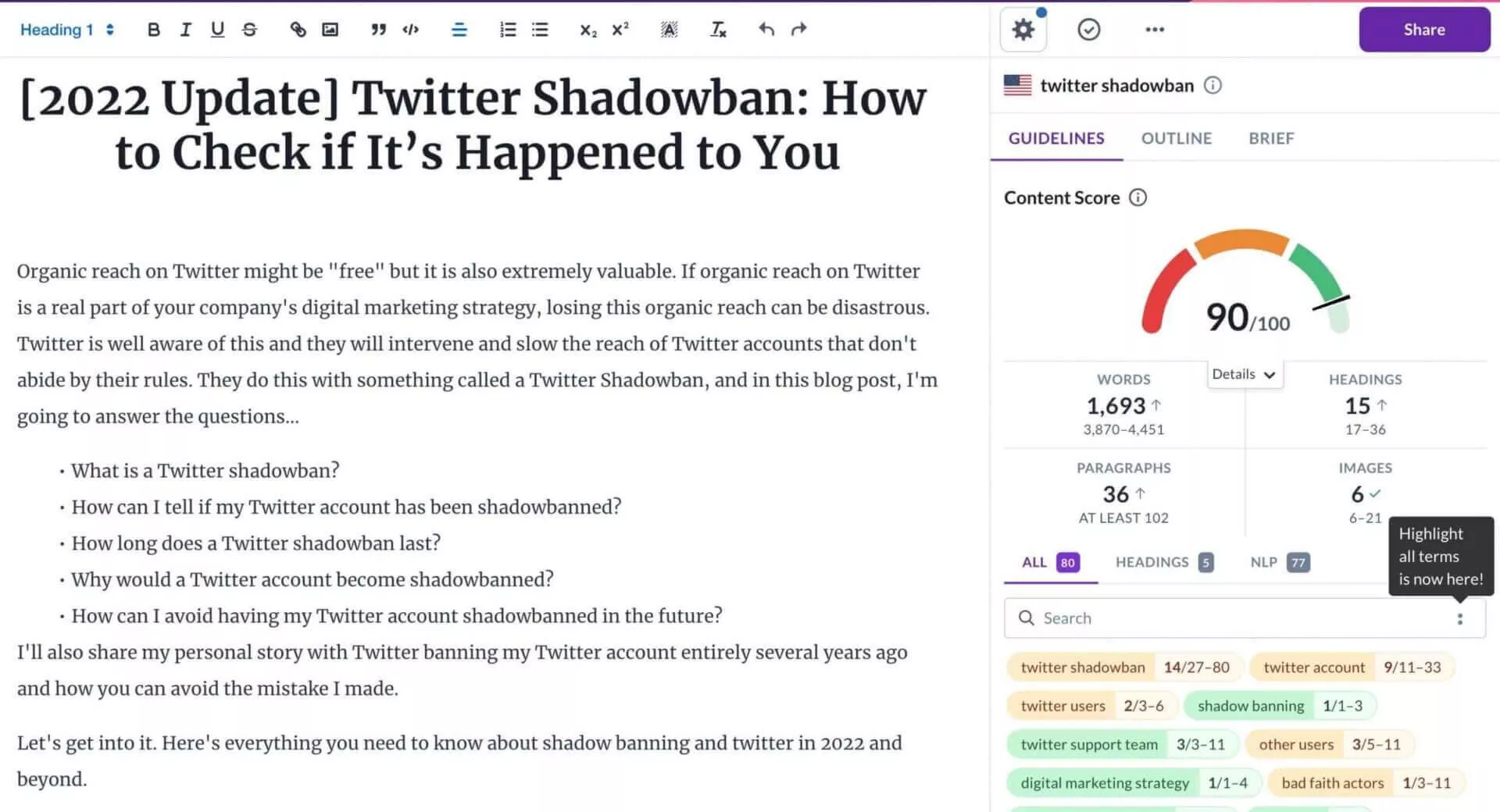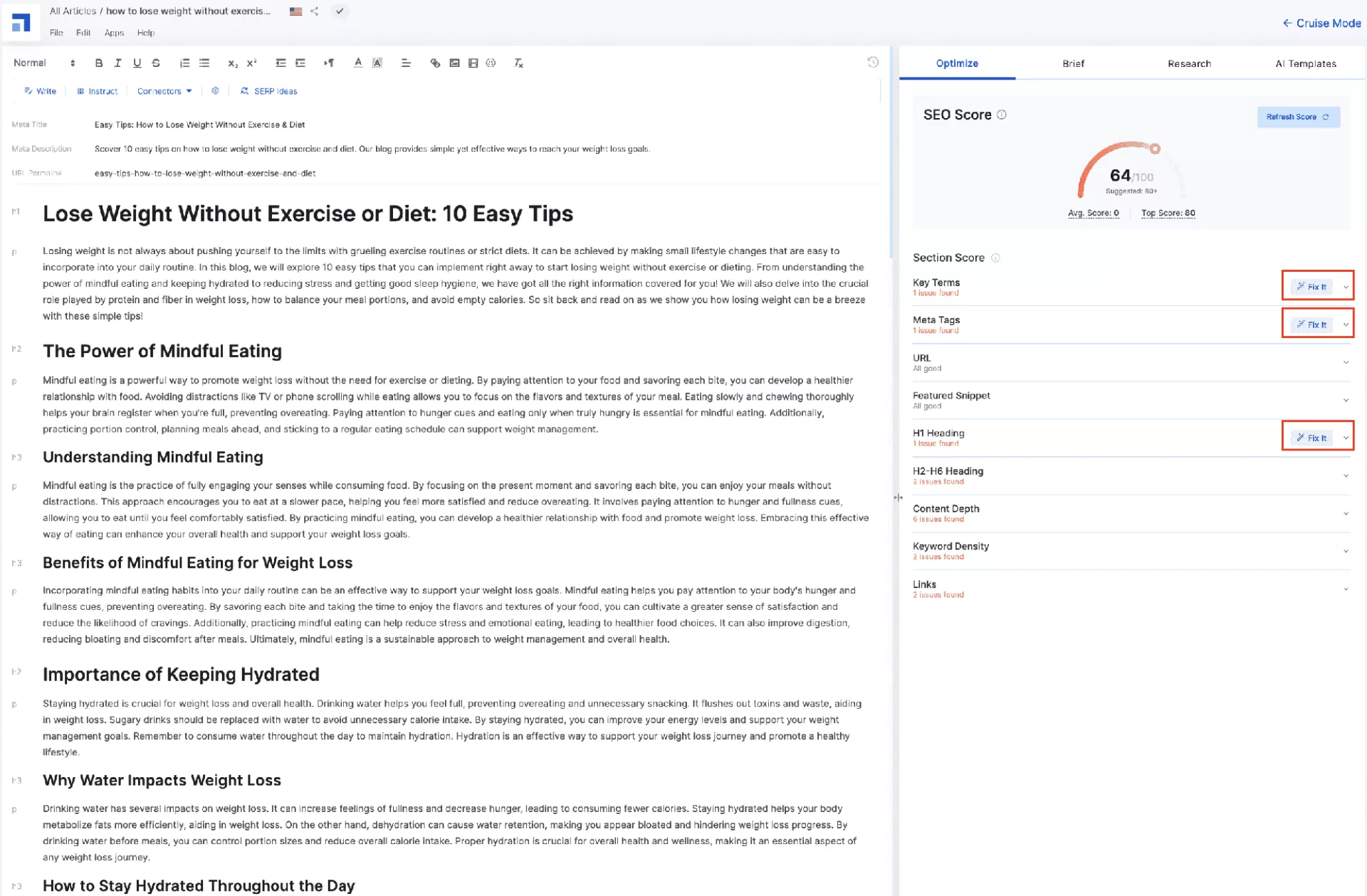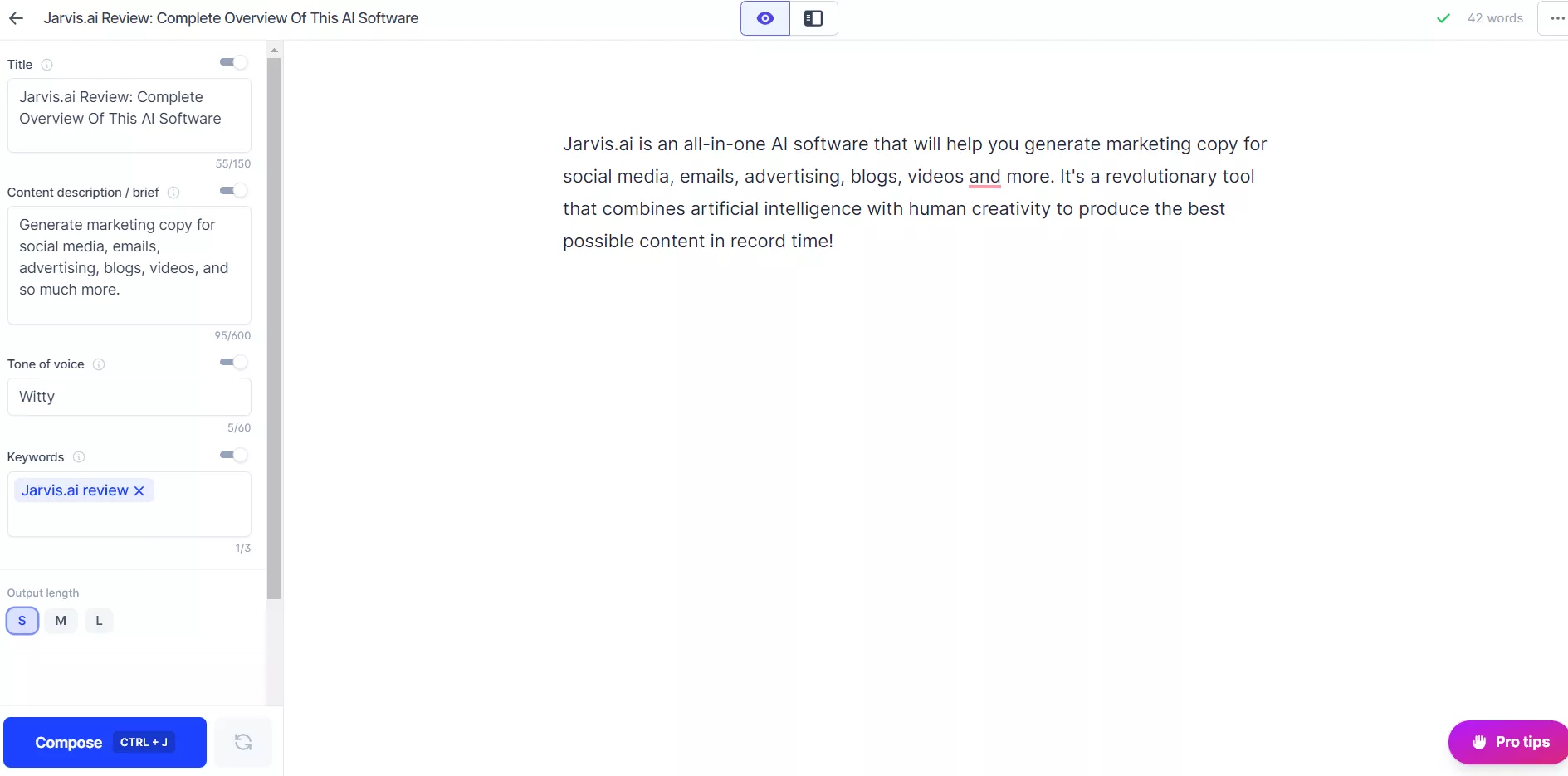Writing faster is a crucial skill for bloggers who want to increase their productivity and produce more content. Being able to write efficiently saves time and allows you to focus on other important aspects of blogging. In this article, we will discuss effective strategies and tools that can help you write faster and improve your overall blogging experience.
By making the most of grammar and spell-checking tools, you can simplify your editing process and guarantee that your blog posts are flawless and finely-tuned. This will ultimately enable you to write more efficiently without compromising the excellence of your content.
Key takeaways:
- Utilize grammar and spell-checking tools for enhanced editing.
- Streamline your editing process for improved efficiency.
- Ensure error-free and polished blog posts.
- Write faster without compromising content quality.
- Enhance your overall writing skills.
- Maintain a professional image with error-free content.
Importance of writing faster in the blogging world
- Increased productivity: Writing faster allows you to produce more content within a given timeframe, ultimately increasing your productivity as a blogger.
- Consistency: Consistently publishing high-quality blog posts is essential for growing your audience and maintaining their interest. By writing faster, you can stick to a regular posting schedule and keep your readers engaged.
- Time for other tasks: Blogging involves many other tasks such as promoting your content, networking with other bloggers, and managing your website. By writing faster, you free up time to focus on these important activities.
- Improved skills: Writing faster challenges you to think more quickly and articulate your thoughts more concisely. This can help improve your overall writing skills and ability to deliver engaging content.
By implementing the strategies and utilizing the tools mentioned in this article, you can significantly enhance your blog writing speed and efficiency. Stay tuned for helpful tips and techniques that will help you become a more productive blogger.
Set a Daily Writing Goal
Benefits of setting a daily writing goal
- Increased productivity: Setting a daily writing goal helps you stay focused and motivated, leading to increased productivity in your blogging efforts.
- Consistent progress: By setting a daily writing goal, you ensure that you make consistent progress towards completing your blog posts or other writing projects.
- Improved time management: A daily writing goal forces you to manage your time effectively, allocating specific periods for writing and eliminating procrastination.
Methods to track and achieve your goal
- Time-based goal: Set a specific amount of time each day for writing, such as 30 minutes or 1 hour. Use a timer or dedicated writing app to track your progress.
- Word count goal: Set a target number of words to write each day. Use a word count tool or the built-in word count feature in your writing software to track your progress.
- Milestone-based goal: Break down your larger writing goal into smaller milestones and set daily goals to reach each milestone. Keep track of your progress using a task management tool or a spreadsheet.
Remember to make your goals achievable and realistic, considering your other commitments and responsibilities. Celebrate your accomplishments along the way to stay motivated and inspired in your blogging journey.
Use Writing Tools and Software
Writing can sometimes be a time-consuming process, but with the right tools and software, you can significantly improve your efficiency. Here are some popular tools and software that can help you write faster and more efficiently.
Overview of different writing tools and software available
- Grammarly: Grammarly is a writing assistant that checks for grammar, spelling, and punctuation errors. It also provides suggestions for improving clarity and conciseness.
- Hemingway Editor: Hemingway Editor helps you simplify your writing by highlighting complex sentences and suggesting simpler alternatives. It also provides readability scores to ensure your content is easily understandable.
- Google Docs: Google Docs is a cloud-based writing tool that allows for easy collaboration, real-time editing, and seamless sharing of documents.
- Evernote: Evernote is a note-taking app that allows you to organize ideas, research, and references in one place. It also offers seamless syncing across devices.
- Scrivener: Scrivener is a powerful writing software that provides organization and structuring capabilities. It allows you to break your writing into manageable sections, making it easier to navigate and edit.
Benefits and features of each tool
- Grammarly helps improve the quality of your writing by ensuring proper grammar, spelling, and punctuation.
- Hemingway Editor simplifies your sentences, making your writing more concise and easy to understand.
- Google Docs enables easy collaboration and sharing with others, making it ideal for team projects.
- Evernote helps you stay organized by allowing you to capture and store ideas, research notes, and references in one place.
- Scrivener offers robust organization features that allow you to outline and structure your writing effectively.
By utilizing these tools, you can streamline your writing process, save time, and produce high-quality content more efficiently.
Top 5 AI Writer for In 2025
Discover the top 5 AI writers that can help you create SEO optimized articles to achieve higher rankings in SERP. From thorough analysis to skillfully crafting content, these AI writers have got you covered.

#1 Surfer SEO

#2 Koala AI Writer

#3 Scalenut

#4 Katteb Ai

#5 Jasper Al
Develop a Writing Routine
Creating a consistent writing routine
Creating an efficient blog writing process requires developing a consistent writing routine. Here are some strategies and tools to help you write faster:
- Set a dedicated time for writing: Choose a specific time of day when you can focus and be productive. This could be in the morning, afternoon, or evening, depending on your personal preference and energy levels.
- Remove distractions: Find a quiet space free from distractions like social media, notifications, and background noise. Consider using website blockers or productivity apps to stay focused.
- Create an outline: Before starting to write, outline your blog post with key points and subheadings. This will give you a clear structure to follow and make the writing process smoother.
- Use templates or frameworks: Develop templates or frameworks for different types of blog posts. These can serve as a starting point and help streamline your writing process.
- Utilize writing tools: Take advantage of writing tools such as grammar checkers, spell checkers, and word count trackers to save time and improve the quality of your writing.
- Practice speed writing: Set a timer and challenge yourself to write without stopping or editing. This technique can help you overcome writer’s block and increase your writing speed.
By developing a consistent writing routine and utilizing these strategies and tools, you can become more efficient in your blogging process and produce high-quality content at a faster pace.
Use Productivity Techniques
When it comes to writing faster and being more efficient as a blogger, there are several productivity techniques that can help increase your writing speed. Here are a few strategies you can implement:
Pomodoro Technique:
This time management method involves working in focused 25-minute intervals, known as pomodoros, followed by short breaks. By breaking your writing tasks into smaller, manageable chunks, you can maintain focus and avoid mental fatigue.
Time Blocking:
Allocate specific blocks of time in your schedule dedicated solely to writing. By treating writing as a scheduled task, you can eliminate distractions and fully immerse yourself in the writing process.
Batching:
Group similar writing tasks together, such as brainstorming ideas, outlining, drafting, and editing. This allows you to stay in a focused mindset and complete similar tasks more efficiently.
Eliminate Distractions:
Minimize interruptions and distractions while you write. Turn off notifications on your phone or computer, close unnecessary tabs or apps, and find a quiet environment where you can fully concentrate on your writing.
Use Writing Tools:
Utilize productivity tools like writing software or apps that offer features such as distraction-free modes, word count tracking, and grammar/spelling checks to help streamline your writing process.
By implementing these productivity techniques and utilizing the right tools, you can optimize your blogging workflow and increase your writing speed effectively. Remember to experiment with what works best for you and tailor these techniques to fit your individual style and preferences. With practice and consistency, you will be able to write faster without compromising the quality of your content.
Introduction
Are you struggling to keep up with your writing deadlines? Do you find yourself spending hours on a single blog post? It’s time to improve your typing speed! Writing faster not only helps you meet deadlines but also increases your productivity and efficiency as a blogger.
Benefits of improving typing speed for faster writing
- Save time: By increasing your typing speed, you can complete your writing tasks in less time, freeing up more time for other important activities.
- Increase productivity: When you can type faster, you can produce more content in a shorter amount of time, allowing you to publish more blog posts and attract a larger audience.
- Improve focus: Writing faster allows you to stay in the flow of your thoughts and ideas, preventing distractions and interruptions that can hinder the writing process.
- Enhance creativity: When you don’t have to constantly think about each keystroke, you can focus more on crafting engaging and compelling content.
Tips and resources to increase typing speed
- Practice touch typing: By learning to type without looking at the keyboard, you can significantly increase your typing speed. There are several online resources and typing games that can help you improve your touch typing skills.
- Use typing software: There are various typing software programs available that provide structured lessons and exercises to improve your typing speed. Some popular options include TypingClub, TypeRacer, Klavaro Touch Typing Tutor, and Rapid Typing.
- Create a comfortable working environment: Make sure your workspace is ergonomically designed to prevent any discomfort or strain that may slow down your typing speed. Use a comfortable chair, position your keyboard correctly, and maintain good posture.
- Take regular breaks: Typing for long periods without breaks can lead to fatigue and decreased typing speed. Take short breaks every hour to stretch and rest your hands.
Remember, improving your typing speed takes time and practice. Be patient with yourself and use these tips and resources consistently to see progress. Your increased typing speed will not only benefit your blogging career but also enhance your overall writing skills.
Outline Your Blog Post
As a blogger, you know that time is precious. Writing faster and more efficiently can help you boost your productivity and meet tight deadlines. One key strategy to achieve this is to outline your blog post before you start writing.
The importance of outlining before writing
Save time: Creating a blog post outline allows you to organize your thoughts and ideas before diving into the actual writing process. This saves you time and helps you stay focused on the main points of your article.
Improved structure: An outline provides a clear structure for your blog post, ensuring that your ideas flow logically and cohesively. It helps you identify the main sections and key points that need to be addressed.
Methods to create an effective outline
- Brainstorm: Start by jotting down all the main ideas and key takeaways you want to include in your blog post.
- Categorize: Organize your ideas into different sections or categories based on their relevance and relationship to each other.
- Add details: Fill in each section with supporting details, examples, and data to strengthen your arguments and provide value to your readers.
- Revise and rearrange: Review your outline and make any necessary revisions or rearrangements to ensure a logical flow of ideas.
By following these methods, you can create a well-structured outline that will guide you through the writing process, making it faster, more efficient, and ultimately resulting in a high-quality blog post.
Write in Drafts
Writing faster is a skill that every blogger needs to develop in order to keep up with the demands of creating consistent content. One effective strategy is to write in drafts. This allows you to get your ideas down quickly without getting bogged down in perfectionism.
Writing in bullet points or fragments for faster drafting
Instead of trying to write complete sentences and paragraphs in your first draft, opt for bullet points or sentence fragments. This enables you to capture your main points and ideas more efficiently. Without the pressure of writing perfectly, you can focus on getting your thoughts on paper and worry about polishing later.
By following this approach, you can save time and increase your writing speed while still producing high-quality content. It allows you to easily revise and reorganize your structure in subsequent drafts while maintaining a clear direction for your writing. So don’t be afraid to make a mess in your first draft – embrace imperfection and let your ideas flow.
Edit and Revise Efficiently
When it comes to blogging, writing faster doesn’t always mean sacrificing quality. By implementing certain strategies and utilizing the right tools, you can improve your efficiency without compromising the integrity of your content.
Using grammar and spell-checking tools effectively
One way to save time during the editing process is by using grammar and spell-checking tools. These tools can help you identify and correct errors in grammar, spelling, and punctuation, allowing you to focus on improving the overall clarity and flow of your writing.
Some popular grammar and spell-checking tools include Grammarly, Hemingway Editor, NounPlus, Ginger, After the Deadline, WhiteSmoke, LanguageTool, and ProWritingAid. Each tool offers unique features to help you enhance your writing.
To use these tools effectively, make sure to set the language preferences and customize them according to your specific needs. Review the suggestions and corrections carefully before applying them. Remember that these tools are just a tool, not a substitute for human judgment and expertise.
By utilizing these grammar and spell-checking tools effectively, you can streamline your editing process and ensure that your blog posts are error-free and well-polished. Ultimately, this will help you write faster without sacrificing the quality of your content.





